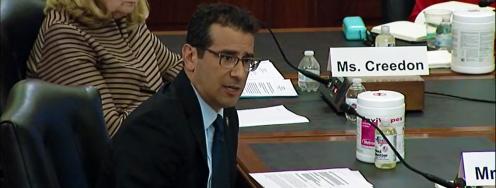Nuclear Security: No Time for Cutting Budgets or Partners
On the radar: The imperative of nuclear cooperation; Responding to Russia; Senate’s good work in jeopardy; Constructive Iran nuclear discussion; the Trouble with China’s kill vehicle; Almost nuclear armageddons; Minot gets more personnel; and Kim Jong-Un is all smiles.
August 12, 2014 | Edited by Lauren Mladenka
Cooperation - “‘I continue to be much more concerned, when it comes to our security, with the prospect of a nuclear weapon going off in Manhattan.’ So said President Obama last March, weighing the danger of nuclear terrorism against that of Russian aggression in Ukraine. Yet our research shows that his administration proposes cutting the amount of money spent on an array of programs to secure nuclear bomb materials around the world and keep them out of terrorists’ hands — to $555 million next year from $700 million in fiscal 2014. And in both houses of Congress, there are efforts to legislate a suspension of nuclear security cooperation with Russia.”
--“This cooperation is not a favor to Russia. It is an investment in vital American security interests. Yet under the president’s proposed 2015 budget, funding for removing nuclear materials from vulnerable locations would be halved, to $58 million from $115 million, allowing fewer such removals than in any year in the past decade. Converting research reactors from high-enriched to low-enriched uranium fuel would be extended five more years; deploying border equipment to detect smuggling would be delayed; work to better protect sites where radiological material (useful for dirty bombs) is stored could slow so much that the task wouldn’t be finished until 2074.”
--“As it considers the president’s budget, Congress should adopt a basic principle: A scarcity of funds should not delay any program that could substantially reduce the risk of nuclear terrorism. Congress should restore at least $100 million of the proposed cuts, and drop its effort to cut off nuclear security work in Russia. It should also consider targeted increases for other efforts to stem the spread of nuclear weapons. The administration, too, must act. Congress should require that the president submit a strategic plan to rapidly achieve effective and sustainable nuclear security for all nuclear weapons and weapons-usable material worldwide. This must include a plan for working with Russia.” Read the full piece by William Tobey, Matthew Bunn, and Nickolas Roth in The New York Times. http://nyti.ms/Y0r7hF
Next steps - “The Obama administration has released a report formally charging Russia with violating the Intermediate-Range Nuclear Forces (INF) Treaty,” writes Matthew Bunn in The Hill. “So where do we go from here? The U.S. government should do what it can to convince Russia not to deploy any prohibited ground-launched cruise missiles. It should work with countries in Europe and Asia, who would face the main military threats such weapons might pose, to join in pressuring Russia not to take this step.”
--“This INF Treaty violation is reason to be careful in our nuclear dealings with Russia – as if any more reasons were needed. But it is not reason to ignore the very real risks to the American people posed by the thousands of unneeded Cold War nuclear weapons still in the U.S. and Russian arsenals, or the role negotiated restraints can still play in reducing those risks.” Full piece here. http://bit.ly/1oqI8MY
Russian bombers - “For the second time since June, Russian nuclear bombers escorted by fighter jets have flown near U.S. and Canadian airspace around Alaska in recent days, prompting precautionary intercepts by American warplanes,” writes Michael Winter in USA Today. “The encounters come amid Russian war games along the border with eastern Ukraine, raising Western concerns that Moscow might invade to support pro-Moscow separatists battling the Kiev government since spring.” Full story here. http://usat.ly/1sFqVio
Tweet - @cirincione: Prof. Bernstein corrects the record: American conservatives are the forgotten critics of the atomic bombing of Japan http://bit.ly/X2pUX3
All for naught - “There is no chance that any of the thirteen annual [appropriations] bills that fund the U.S. government will be signed into law by the end of the fiscal year on September 30th,” writes Stephen Young in All Things Nuclear. “Instead, there will be a Continuing Resolution (CR) that funds the government at the same level as the current fiscal year. The only question is how long a time period the CR will cover. Among the many reasons that this is unfortunate are the sound decisions on nuclear weapons programs that populate the Senate version of the Fiscal Year 2015 Energy and Water Development appropriations act and its accompanying report, including well-considered funding levels, that may never become law.”
--The committee’s report outlines appropriators’ reluctance to support B61 updates and funding for a new cruise missile. Moreover, report highlights the committee’s concern about “NNSA’s ability to execute multiple, highly complex life extension projects and construction projects concurrently under ambitious schedules. The Committee has not seen sufficient progress in improving project management so NNSA can complete projects on time and on budget.”
--“Unless the committee’s bill ends up included in some type of omnibus appropriations act (which could happen in early 2015) none of these directions have the force of law. Given the wisdom and clear thinking that runs throughout the report, that would be an unfortunate outcome.” Full article here. http://bit.ly/1pLH0Sl
Constructive talks - “U.S. and Iranian officials had a ‘constructive discussion’ about Iran's nuclear program in Geneva on Thursday,” writes Arshad Mohammad in Reuters. “U.S. Deputy Secretary of State Bill Burns and Iranian Deputy Foreign Minister Abbas Araqchi met in Geneva,” though the State Department did not provide details of the discussion. Full story here. http://reut.rs/1kOlde7
Staying on - “U.S. Deputy Secretary of State Bill Burns and White House aide Jake Sullivan will remain involved in the nuclear talks with Iran after they leave their current posts,” reports Arshad Mohammad for Reuters. Read the full article here. http://reut.rs/1ukIV4s
China’s kill vehicle - China has conducted its third so-called missile defense test, writes Jeffrey Lewis in Foreign Policy. “More importantly, it is at least the fourth test of something called the ‘SC-19’ -- China's direct-ascent interceptor, first tested against a satellite in 2007. There is a big debate about whether the SC-19 is intended to shoot down missiles or satellites.”
--“In fact, it's supposed to do both. Or neither. The pointy end of the SC-19 -- the part known as a ‘kill vehicle’ -- is best understood as a technology that can be used for many missions. China's development of a specific technology -- ‘exoatmospheric kinetic intercept’ or, in English, ‘hit-to-kill’ -- represents a new, disturbing trend in the proliferation of advanced conventional weapons… it should become clear that China's so-called missile defense tests represent a big threat to U.S. satellites. While shooting down missiles may be hard, shooting down satellites is easy. And the spread of hit-to-kill technologies is an enormous danger to the use of space.”
--“There is value to limiting anti-satellite testing; the creation of debris is easily verified; and it would not limit U.S. missile defense programs. But perhaps most importantly, a ban on anti-satellite tests that create debris in space would be more in the interest of the United States than any other country on Earth.” Full article here. http://atfp.co/1sLBnpn
Tweet - @nukes_of_hazard: "Should America Fear China's Nuclear Weapons? Useful survey, analysis from @drfarls in @TheNatlInterest http://ow.ly/AdfJh
New personnel - “Minot Air Force Base will be getting 303 more personnel through an effort to strengthen the military's nuclear mission,” AP reports. “The military has been working to address problems, including morale and training issues, in the nuclear mission. Lt. Gen. Stephen Wilson, commander of Global Strike Command, said earlier this year that more than 1,000 personnel would be added to the five bases in the command.” Read the full article here. http://1.usa.gov/1oZfPUG
Almost armageddon - “During the Cold War, ‘crisis’ had a special connotation, because each moment of political conflict raised the possibility of nuclear war between the United States and the Soviet Union.” writes Tom Nichols in The National Interest. “Every confrontation carried the potential not only for war, but for the extermination of human civilization. While we look back on these periods now as something like curios in a museum, they were moments of existential fear for both American and Soviet leaders.”
--Nichols summarizes five instances in which nuclear armageddon was almost unleashed on the world, including: 1) The Wall and the Diplomat: Berlin, 1961, 2) The Closest Call: Cuba 1962, 3) The War the Soviet Generals Wanted: Vietnam, 1965, 4) Red Alert: The Middle East, 1973, and 5) This is Only an Exercise: Europe, 1983. Read the full piece here. http://bit.ly/1lQieN9
Missile expert passes - “A former North Korean missile expert who was placed under sanctions by the United Nations for his role in the country's nuclear and missile weapons programs has died,” writes James Pearson in Reuters. “The announcement of Jon Pyong Ho's death came as North Korea launched short-range missiles into its eastern waters in the early hours of Wednesday.” Full story here. http://reut.rs/1r6Saot
Quick-hits:
--“How to Hide a Nuclear Missile” by Nick Blackbourn in Gizmodo. http://bit.ly/1sRkZ6I
--“Activists mark Hiroshima and Nagasaki in seven-mile bike ride” by Marianne Levine in the Los Angeles Times. http://lat.ms/1swujyj
--“Nuclear ‘Command and Control’: A History of False Alarms and Near Catastrophes from NPR. http://n.pr/1kxH894
--“Billionaire’s sketchy Middle East gamble: Meet the man betting on war with Iran” by Eli Clifton in Salon. http://bit.ly/1ri4e1K
--”New nuclear submarine arms race poses great danger” by Lawrence Wittner in the Times of Trenton. http://bit.ly/1q6uGJK
--“Maine public hearings set on missile defense site” from the AP. http://on.wsj.com/1nLtXwf
Dessert:
Kim Jong-Fun - Despite North Korean president Kim Jong-Un’s stern and serious facade, the leader was recently photographed touring a lubricant facility with a massive smile on his face. Apparently, “nothing puts a grin on that man’s face like extruded semi-solids.” Watch the full bit on The Colbert Report. http://on.cc.com/1mFNcaN



